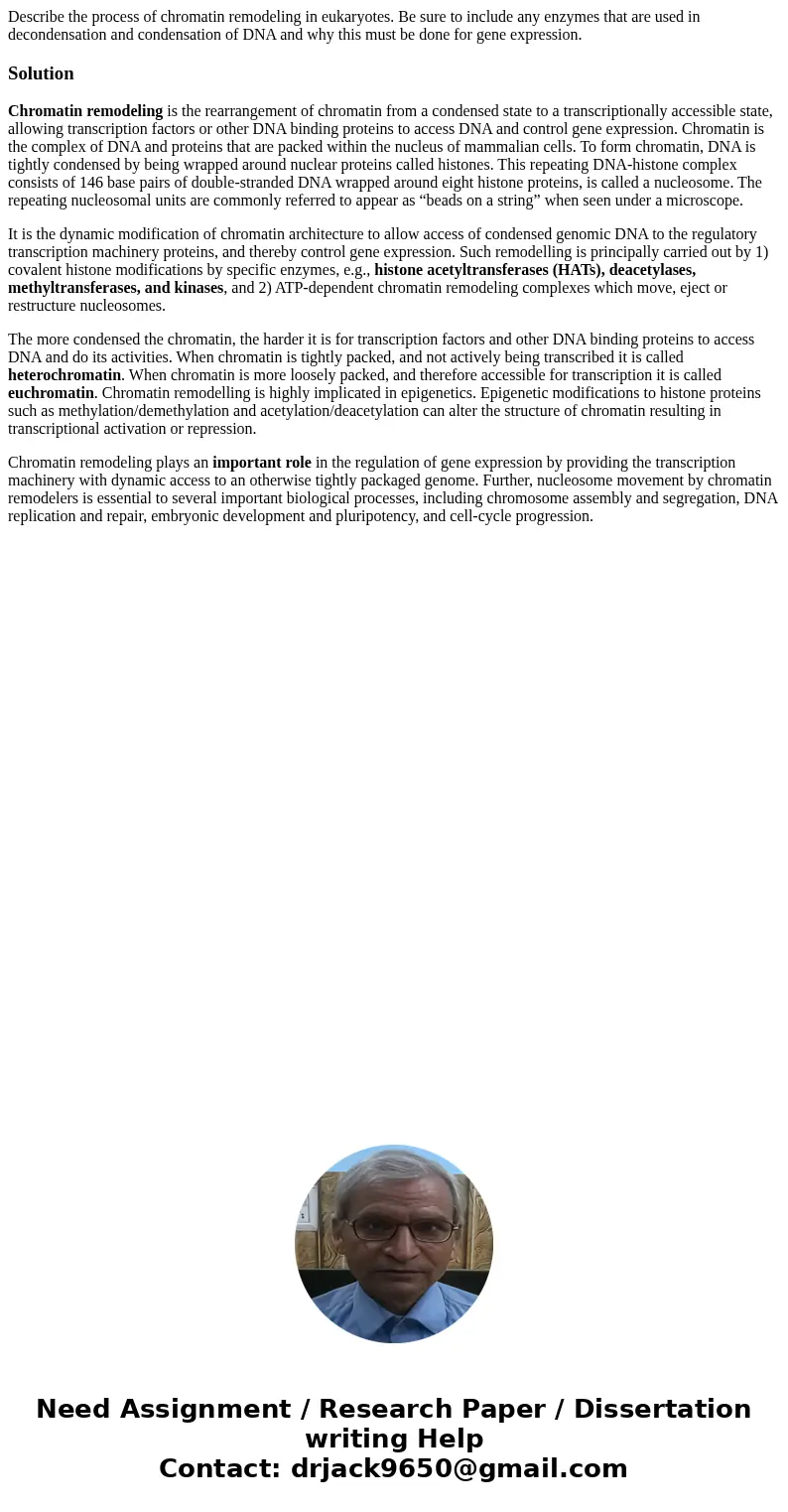Describe the process of chromatin remodeling in eukaryotes B
Solution
Chromatin remodeling is the rearrangement of chromatin from a condensed state to a transcriptionally accessible state, allowing transcription factors or other DNA binding proteins to access DNA and control gene expression. Chromatin is the complex of DNA and proteins that are packed within the nucleus of mammalian cells. To form chromatin, DNA is tightly condensed by being wrapped around nuclear proteins called histones. This repeating DNA-histone complex consists of 146 base pairs of double-stranded DNA wrapped around eight histone proteins, is called a nucleosome. The repeating nucleosomal units are commonly referred to appear as “beads on a string” when seen under a microscope.
It is the dynamic modification of chromatin architecture to allow access of condensed genomic DNA to the regulatory transcription machinery proteins, and thereby control gene expression. Such remodelling is principally carried out by 1) covalent histone modifications by specific enzymes, e.g., histone acetyltransferases (HATs), deacetylases, methyltransferases, and kinases, and 2) ATP-dependent chromatin remodeling complexes which move, eject or restructure nucleosomes.
The more condensed the chromatin, the harder it is for transcription factors and other DNA binding proteins to access DNA and do its activities. When chromatin is tightly packed, and not actively being transcribed it is called heterochromatin. When chromatin is more loosely packed, and therefore accessible for transcription it is called euchromatin. Chromatin remodelling is highly implicated in epigenetics. Epigenetic modifications to histone proteins such as methylation/demethylation and acetylation/deacetylation can alter the structure of chromatin resulting in transcriptional activation or repression.
Chromatin remodeling plays an important role in the regulation of gene expression by providing the transcription machinery with dynamic access to an otherwise tightly packaged genome. Further, nucleosome movement by chromatin remodelers is essential to several important biological processes, including chromosome assembly and segregation, DNA replication and repair, embryonic development and pluripotency, and cell-cycle progression.

 Homework Sourse
Homework Sourse